WATCHMAN AFib Implant
WATCHMAN is a leading noninvasive treatment for patients with atrial fibrillation. More than 400 WATCHMAN procedures have been performed by the Interventional Cardiologists at Singing River.
WATCHMAN reduces stroke risk in people with atrial fibrillation not caused by a heart valve problem. It works differently from blood thinners like warfarin. This left atrial appendage implant is a one-time procedure.
More than 400,000 patients have received the WATCHMAN implant, and more than 400 WATCHMAN procedures have been performed at Singing River.
Advanced Design
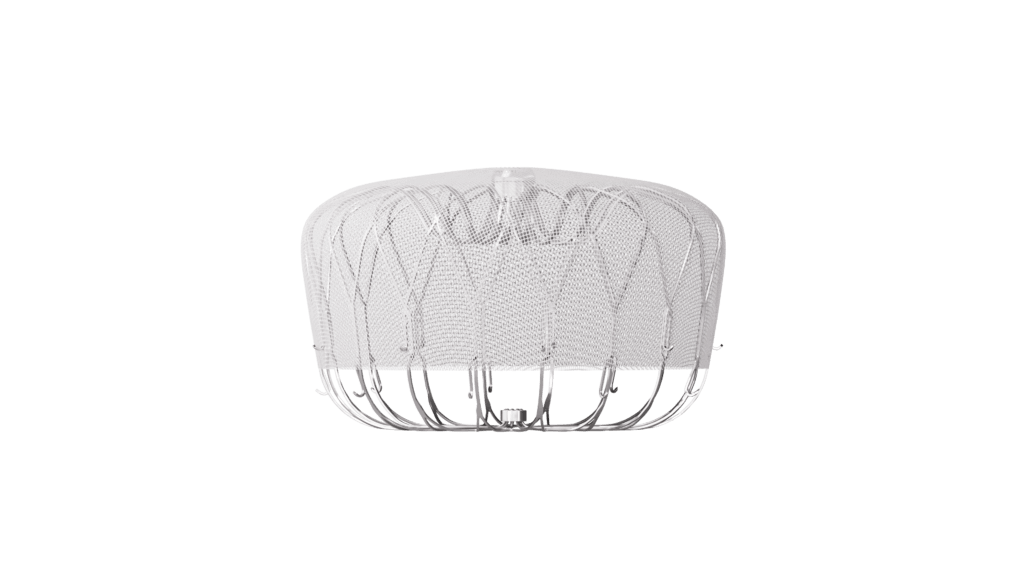
The WATCHMAN is a small, flexible implant about the size of a quarter. It is made from very light, compact materials commonly used in many other medical implants. It is placed into your heart during a short, minimally invasive procedure. It does not require open heart surgery and never needs to be replaced.
The WATCHMAN FLX Pro, the device’s next generation design, has three new features:
- 40mm size for larger appendages, giving more people than ever a safe and effective alternative to blood thinners.
- HEMOCOAT technology designed to improve the healing process.
- Radiopause markers for precise device placement.
The WATCHMAN Difference
In a clinical trial, 9 out of 10 people were able to stop taking warfarin just 45 days after getting WATCHMAN. At one year, 99 out of 100 people were able to stop taking warfarin.
WATCHMAN Safety
WATCHMAN has a proven record of safety. Worldwide, more than 400,000 people have received the WATCHMAN Implant. WATCHMAN has been clinically studied for more than 20 years in the United States and is the #1 doctor recommended LAA implant.
How WATCHMAN Works
Atrial fibrillation, or AFib, affects your heart’s ability to pump normally. This can cause blood to pool in an area called the left atrial appendance, or LAA. There, blood cells can stick together and form a clot. When a blood clot escapes from the LAA and travels to another part of the body, it can cut off the blood supply to the brain, causing a stroke.
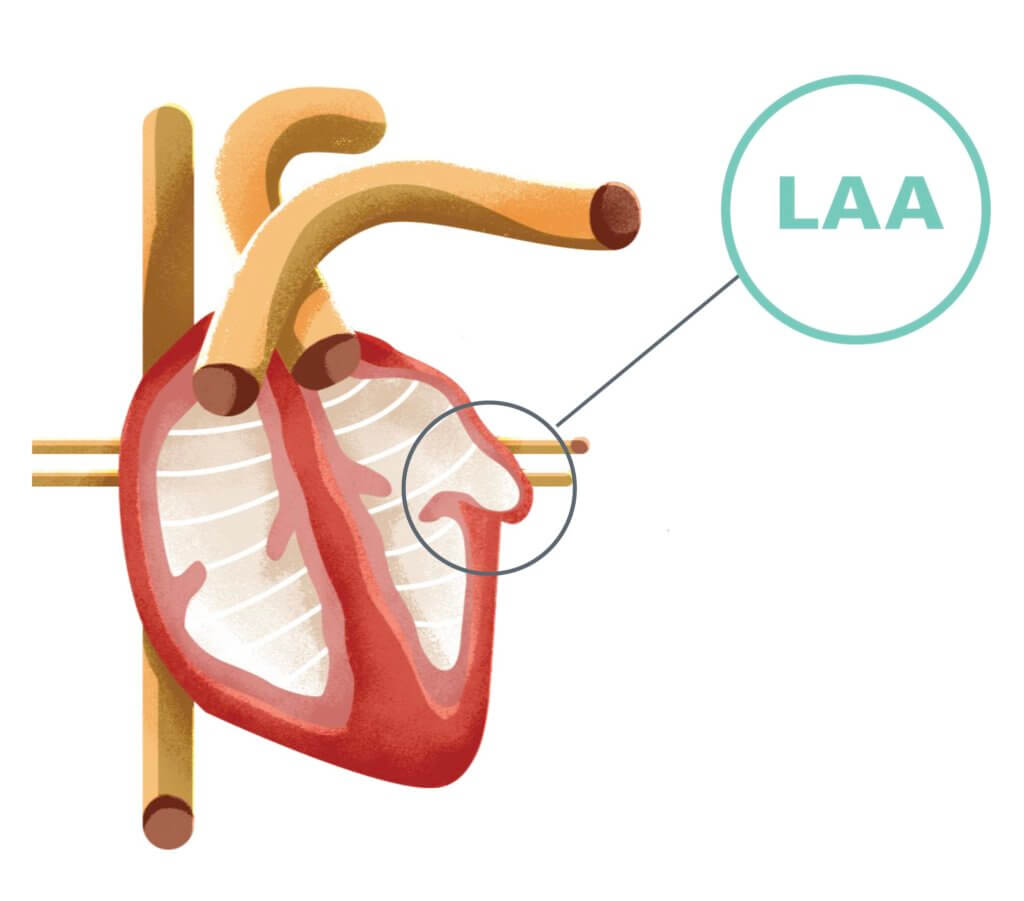
WATCHMAN fits into a part of your heart called the left atrial appendage (LAA).

In people with AFib not caused by a heart valve problem, more than 90% of stroke-causing blood clots that come from the heart are formed in the LAA. This is why closing off this part of the heart is an effective way to reduce stroke risk.

WATCHMAN FLX Pro implant fits right into your LAA. It permanently closes off this part of your heart to keep those blood clots from escaping.
The WATCHMAN Procedure
The WATCHMAN Implant is about the size of a quarter, and it doesn’t require open-heart surgery. Here’s what happens during the procedure.
1. To implant WATCHMAN, your doctor makes a small cut in your upper leg and inserts a narrow tube.
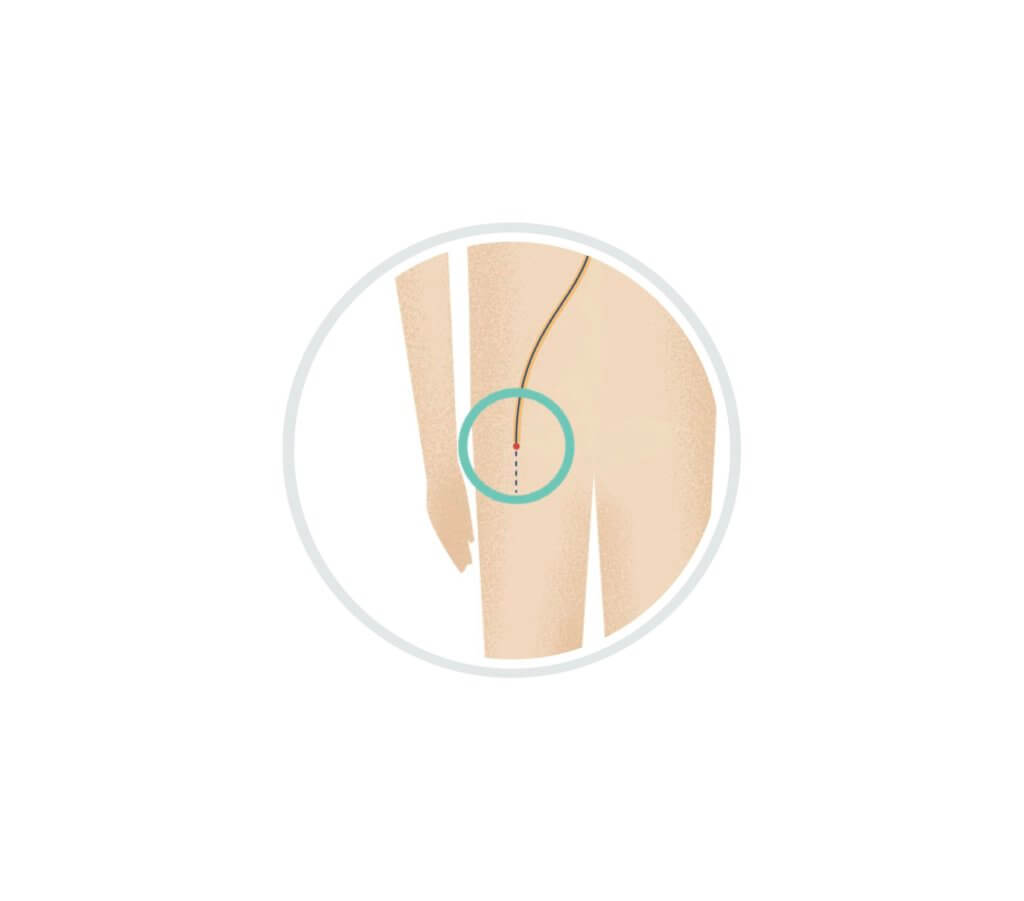
2. Your doctor then guides WATCHMAN through the tube, into your left atrial appendage (LAA).
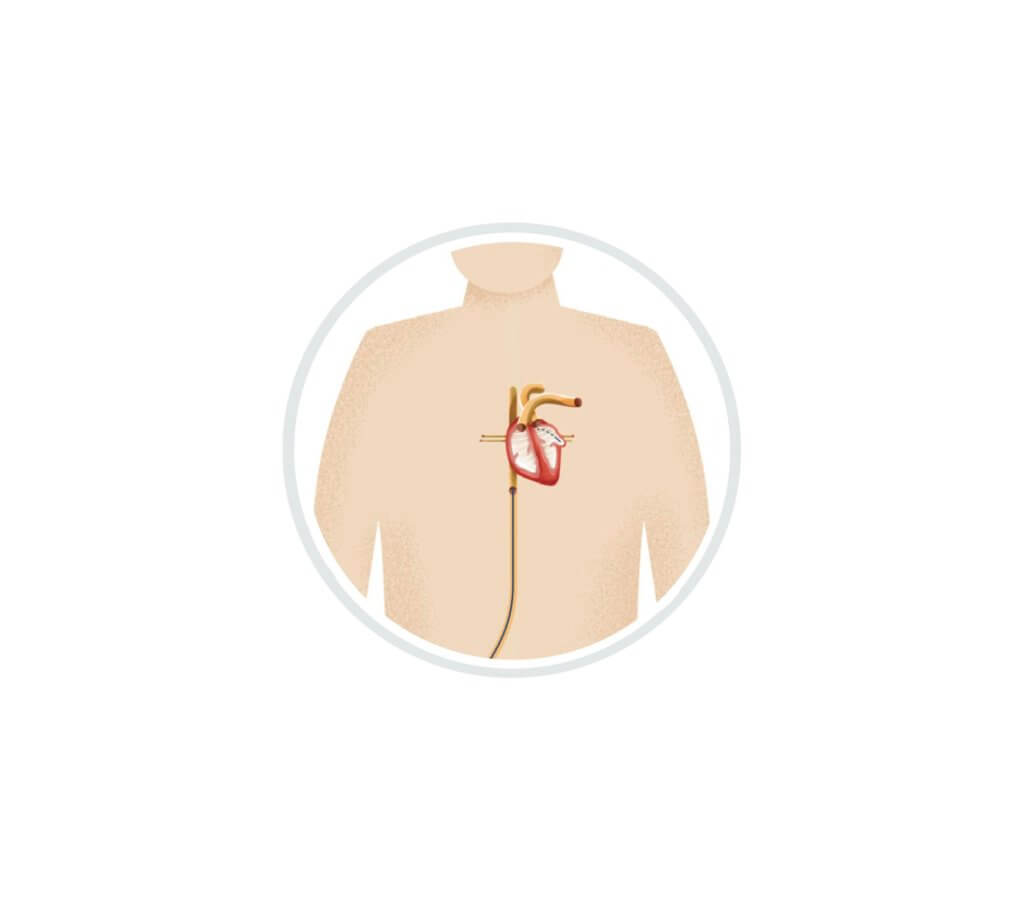
3. The procedure is done
under general anesthesia and typically takes about an hour. People who get the WATCHMAN Implant usually stay in the hospital overnight and go home the next day.

4. After the procedure, you’ll take warfarin until your LAA is permanently closed off—usually just 45 days.

5. During that time, heart tissue grows over the WATCHMAN Implant to form a barrier against blood clots.
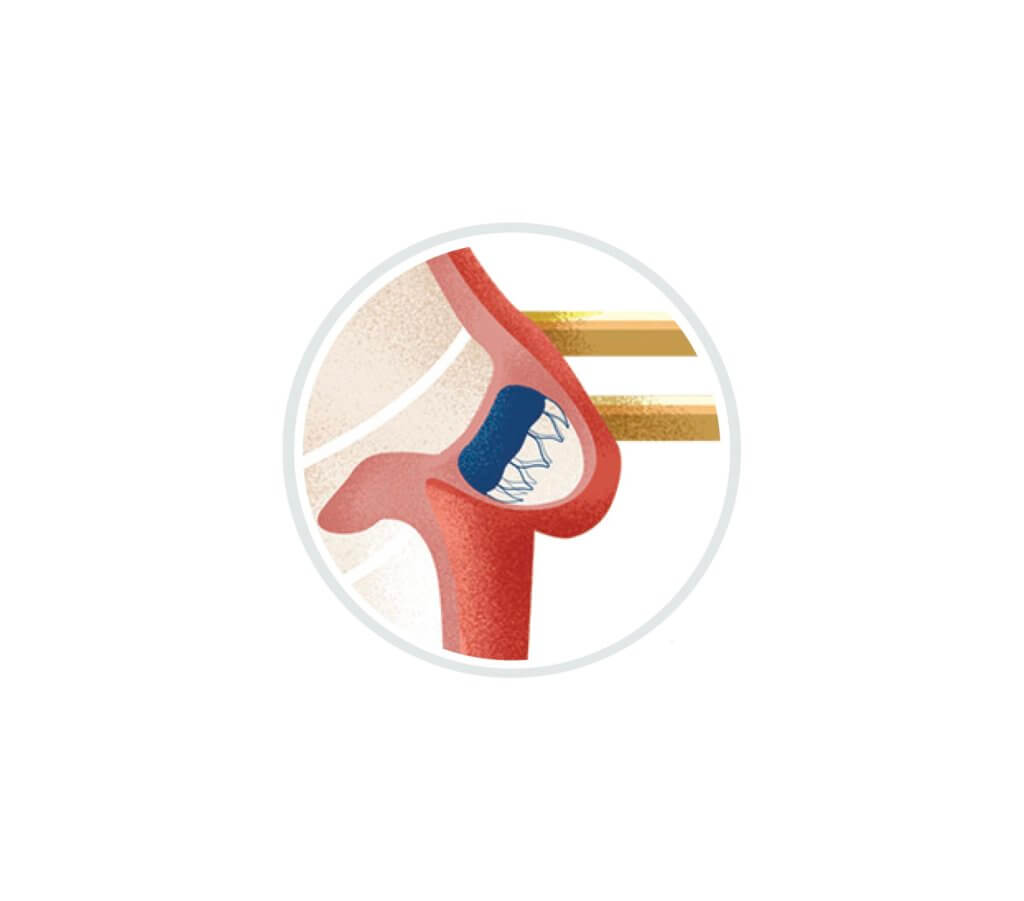
Watch a Video About How WATCHMAN FLX Pro Works
Is WATCHMAN Right For You?
You may be a candidate for WATCHMAN if you can answer yes to the following questions:
- Do you have atrial fibrillation not caused by a heart valve problem?
- Has your doctor recommended that you take a blood thinner for your AFib?
- Can you take warfarin but need an alternative to long-term blood thinners for one of the reasons below?
- You have a history of serious bleeding while taking blood thinners
- You have a lifestyle, occupation, or condition that puts you at risk for serious bleeding
- You’re taking warfarin and having trouble with your treatment plan, and a different type of blood thinner isn’t an option for you
Cost and Coverage
Insurance
WATCHMAN is covered for eligible Medicare patients who meet certain national coverage criteria. It’s also covered by an increasing number of commercial insurers.
WATCHMAN Cost Vs. Blood Thinners
While blood thinners must be taken ever day for life and represent an ongoing cost, WATCHMAN is a one-time procedure and one-time cost. This means that, over time, the WATCHMAN implant can cost less than blood thinners. The total out-of-pocket cost is lower than warfarin by year two and half its cost by year five.1
1. Armstrong S, Amorosi SL, Patel P, Erickson GC, Stein K. Medicare
beneficiary out-of-pocket spending for stroke prevention in non-valvular
atrial fibrillation: a budget analysis. Value Health (ISPOR). 2015;18:A1-A307
(A40,PMD13). https://www.valueinhealthjournal.com/article/S1098-
3015(15)00296-X/pdf. Accessed March 28, 2019








